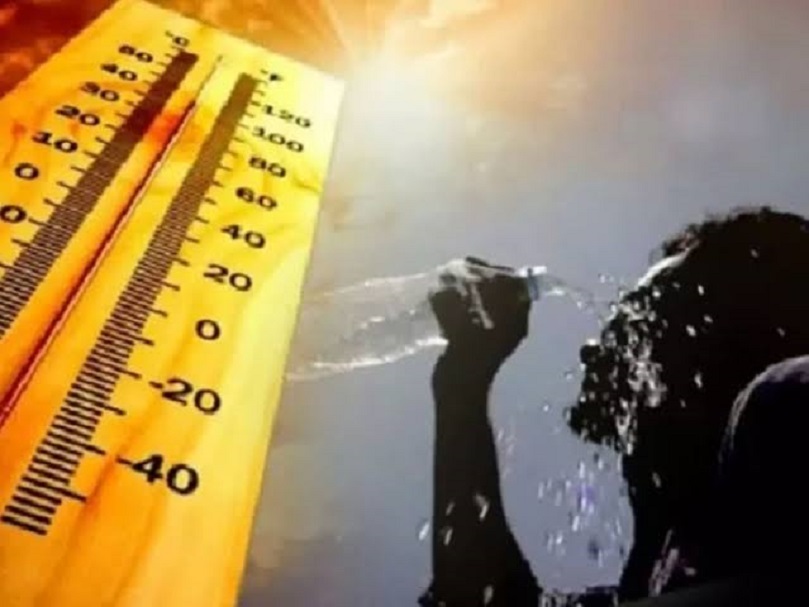Kashmir Heatwave: Srinagar Hits 35.2°C in June, Breaking 20-Year Record | Climate Change in the Himalayas
Srinagar | 20 June 2025
The Valley Under Fire
A region celebrated for its alpine coolness and crisp summer breeze is now sweating under a blistering sun. Kashmir is experiencing an unprecedented heatwave, with Srinagar recording 35.2°C on June 19, 2025, the highest June temperature in two decades. The anomaly isn’t just uncomfortable—it’s a worrying signal of a climate in crisis.
As mercury rises, the Valley’s unique Himalayan ecosystem, fragile infrastructure, and already stressed water resources face compounding risks. What’s going on, and is this the new summer normal for Kashmir?
Valley-wide Temperature Records: Red-Hot Reality
This isn’t just a Srinagar phenomenon. The heatwave has scorched most of the Kashmir Valley, with multiple towns breaking long-standing temperature records:
- Qazigund: 34.7°C — Hottest June day in 37 years
- Kokernag: 33.8°C — Second-highest in nearly three decades
- Pahalgam: 29.6°C — Uncharacteristically hot for this hill station
- Gulmarg: 25.9°C — Far above the norm for Kashmir’s snow paradise
Even these seemingly modest numbers are deeply troubling given the region’s typical climate. The seasonal average for Srinagar in June is around 28°C, making the current spike nearly 7 degrees above normal.
What’s Fueling the Heatwave?
Climate experts point to a combination of global and local factors:
A. Rainfall Deficit and Dry Air
- Kashmir has reported a 26% deficit in rainfall this June so far.
- With fewer showers and drier soils, the natural cooling mechanisms are impaired.
- Low glacial runoff means reduced river flow, affecting both ecosystems and agricultural cooling.
B. Urban Heat Island Effect
- Srinagar’s rapid urbanization, concrete-heavy infrastructure, and vehicle congestion have created a heat-retaining environment.
- Lack of green cover and rampant construction prevent night-time cooling.
- The Dal Lake, once a natural temperature regulator, is shrinking and polluted, further weakening local climate buffers.
C. Accelerated Climate Change in the Himalayas
- Studies confirm that the Himalayan region is warming at nearly twice the global average.
- Snowlines are retreating, glacial melt is erratic, and weather patterns are increasingly volatile.
Dr. Shahid Rasool, a noted climatologist at the University of Kashmir, warns:
“We are approaching a tipping point. Heatwaves in Kashmir were once unheard of; now they may become seasonal realities.”
Public Health and Ecological Consequences
A. Health Risks
- Increased cases of heatstroke, dehydration, and respiratory distress
- Vulnerable groups: elderly, infants, outdoor workers, and those with chronic illnesses
- Surge in demand for hospital services and essential medications
B. Environmental Impact
- Dry conditions increase forest fire risks, especially in southern districts
- Crops like apples, cherries, and saffron are under heat stress
- Wildlife, especially in Dachigam and Gulmarg reserves, is exhibiting displacement and dehydration symptoms
Relief on the Horizon?
The India Meteorological Department (IMD) has forecast some respite. According to the 7-day bulletin:
- Intermittent rainfall and thunderstorms are expected between June 21–27
- While the rain may cool the region, it brings risks of flash floods and landslides, especially in hilly areas like Pahalgam, Sonamarg, and Doda
- IMD has issued yellow warnings for vulnerable districts, urging tourists and residents to stay alert
What Can Be Done?
A. Short-Term Measures
- Avoid peak sun exposure (11 AM – 4 PM)
- Stay hydrated, wear light cotton clothing, and use fans or coolers
- Government must distribute ORS, water bottles, and shaded shelters for street vendors and laborers
B. Long-Term Planning
- Implement urban greening projects in Srinagar and other towns
- Restore and protect wetlands and water bodies like Dal, Anchar, and Wular Lakes
- Promote climate-resilient farming practices
- Introduce building codes to combat urban heat islands
- Engage in climate awareness campaigns at schools and community levels
The Big Picture: Kashmir’s Climate Crisis Is Here
This heatwave is not an isolated event. It is part of a larger pattern of extreme weather in Jammu & Kashmir:
- Erratic snow in winter
- Unseasonal rain in spring
- Dry heat in summer
- Flash floods in autumn
Together, these symptoms point to a climate in distress—and a region that must rapidly adapt. From tourism to horticulture, every sector will be impacted if resilience is not built into Kashmir’s development model.
Bottom-Line: From Paradise to Pressure Cooker
Kashmir’s legendary climate—once likened to heaven on Earth—is under siege. While the June heatwave of 2025 may break records, it also breaks illusions that the Valley is immune to the global climate crisis.
The urgency is clear. A new environmental policy framework, backed by science and community action, is no longer optional—it’s essential.



